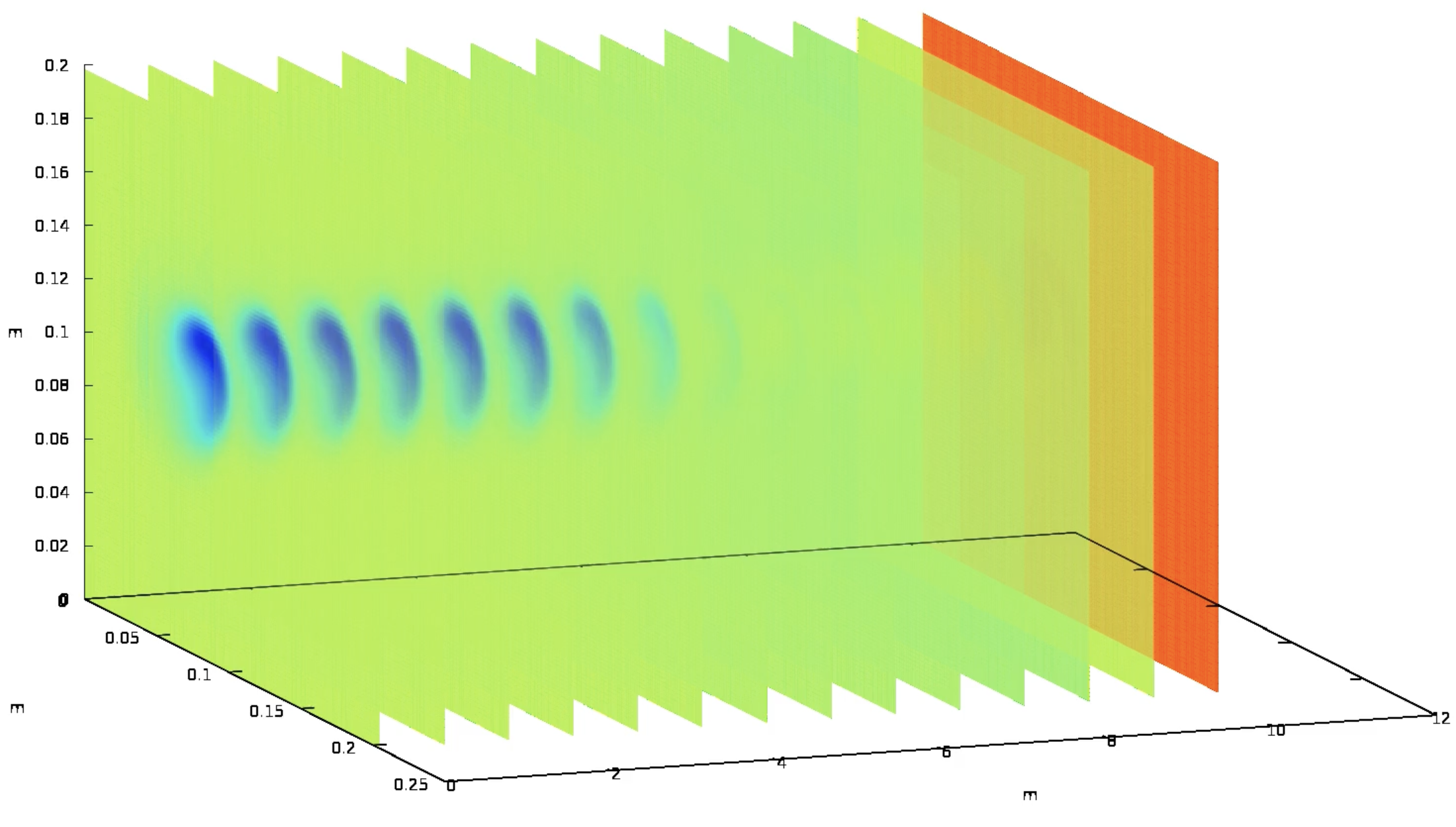Effects of excitation voltage pulse shape on the characteristics of atmospheric-pressure nanosecond discharges. Donkó, Z; Hamaguchi, S; Gans, T. Plasma Sources Science and Technology 2019
Computational techniques for describing and predicting plasma properties. Accurate and well benchmarked simulations and models can predict new power coupling and distribution mechanisms, excitation schemes and configurations.

About the Research Area
Plasma modelling and simulations are essential tools in the field of plasmas, helping us understand and predict the behaviour of plasmas in various applications, from fusion energy to plasma processing. By utilising mathematical models and computer simulations, we can gain insight into the complex and dynamic behaviour of plasmas and develop new techniques and technologies to manipulate and control them. Plasma modelling and simulation techniques include particle-in-cell (PIC) simulations, fluid simulations and hybrid models, each with its own advantages and limitations for different types of plasma applications. Plasma simulations coupled with diagnostics are particularly powerful in gaining a more complete understanding of plasma behaviour, and thus optimise plasma sources and develop new plasma-based technologies.
Modelling and Simulation Publications
Experimental and computational investigations of electron dynamics in micro atmospheric pressure radio-frequency plasma jets operated in He/N 2 mixtures. Bischoff, L; Hübner, G; Korolov, I; Donkó, Z; Hartmann, P; Gans, T; Held, J; Schulz-Von Der Gathen, V; Liu, Y; Mussenbrock, T; Schulze, J. Plasma Sources Science and Technology 2018
Experimental benchmark of kinetic simulations of capacitively coupled plasmas in molecular gases. Donkó, Z; Derzsi, A; Korolov, I; Hartmann, P; Brandt, S; Schulze, J; Berger, B; Koepke, M; Bruneau, B; Johnson, E; Lafleur, T; Booth, J.-P; Gibson, A.R; O’Connell, D; Gans, T. Plasma Physics and Controlled Fusion 2018
QDB: A new database of plasma chemistries and reactions. Tennyson, J; Rahimi, S; Hill, C; Tse, L; Vibhakar, A; Akello-Egwel, D; Brown, D.B; Dzarasova, A; Hamilton, J.R; Jaksch, D; Mohr, S; Wren-Little, K; Bruckmeier, J; Agarwal, A; Bartschat, K; Bogaerts, A; Booth, J.-P; Goeckner, M.J; Hassouni, K; Itikawa, Y; Braams, B.J; Krishnakumar, E; Laricchiuta, A; Mason, N.J; Pandey, S; Petrovic, Z.L; Pu, Y.-K; Ranjan, A; Rauf, S; Schulze, J; Turner, M.M; Ventzek, P; Whitehead, J.C; Yoon, J.-S. Plasma Sources Science and Technology 2017